
Acute and Critical Care
Scope & Guideline
Fostering global collaboration in critical care research.
Introduction
Aims and Scopes
- Critical Care Medicine and Management:
The journal covers various aspects of critical care medicine including innovative management strategies for complex conditions, end-of-life care, and the ethical dilemmas faced in intensive care units. - Pediatric and Adult Intensive Care:
Research spanning both pediatric and adult populations, addressing unique challenges and treatment protocols specific to each demographic. - Use of Technology in Critical Care:
Exploration of advanced technologies such as machine learning, deep learning, and telemedicine in predicting outcomes and enhancing patient monitoring. - Multidisciplinary Approaches:
Focus on the integration of various specialties, including nursing, nutrition, and rehabilitation, to optimize patient care and recovery in critical settings. - Psychosocial Aspects of Critical Care:
Investigation into the psychological and social dimensions of critical illness, including family support, mental health interventions, and post-intensive care syndrome. - Infectious Disease Management:
A significant emphasis on the management of infections, including sepsis, COVID-19, and other infectious challenges faced in critical care environments.
Trending and Emerging
- Telemedicine and Remote Monitoring:
An increasing number of studies focus on the role of telemedicine in critical care, especially in light of the COVID-19 pandemic, showcasing its potential for remote patient monitoring and management. - Psychological and Emotional Well-being:
Research on the psychosocial aspects of critical illness, including the mental health of patients and their families, has gained traction, emphasizing the importance of holistic care. - Artificial Intelligence and Machine Learning:
A significant rise in the use of AI and machine learning algorithms for predicting outcomes in critically ill patients, representing a shift towards data-driven decision-making in critical care. - Nutritional Interventions:
An emerging focus on the role of nutrition in critically ill patients, exploring how nutritional status impacts recovery and outcomes, particularly in the context of COVID-19. - Post-Intensive Care Syndrome Research:
Increased attention towards understanding and managing post-intensive care syndrome, addressing long-term outcomes and rehabilitation strategies for survivors of critical illness.
Declining or Waning
- Traditional Pharmacological Interventions:
There has been a noticeable decline in studies focusing solely on traditional pharmacological treatments, possibly overshadowed by an increasing interest in non-pharmacological therapies and technological advancements. - Single-Center Studies:
The prevalence of single-center studies seems to be waning, with a shift towards multicenter collaborations and larger cohort studies that provide more generalizable results. - Basic Physiological Studies:
Research focusing solely on basic physiological mechanisms without clinical application appears to be less prominent, as the journal emphasizes practical, outcome-oriented studies. - Invasive Monitoring Techniques:
A decline in papers centered around invasive monitoring techniques may indicate a shift towards less invasive methods and a focus on patient comfort and safety. - Emergency Medicine Focus:
The emphasis on emergency medicine topics within critical care seems to be less frequent, possibly reflecting the journal's broader scope towards comprehensive critical care management.
Similar Journals
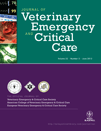
JOURNAL OF VETERINARY EMERGENCY AND CRITICAL CARE
Elevating standards in emergency veterinary medicine.JOURNAL OF VETERINARY EMERGENCY AND CRITICAL CARE, published by WILEY, is a leading journal in the field of veterinary science, specifically focusing on emergency medicine and critical care for animals. With an impact factor that underscores its significance in the field, this journal serves as a crucial resource for veterinary professionals, researchers, and students dedicated to advancing the care of animals in critical conditions. Since its inception in 1991, the journal has continually contributed to the knowledge base and methodological advancements in veterinary emergency practices, consistently ranking in the Q1 category for veterinary sciences, as per the latest Scopus Ranks. Located in the United Kingdom, the journal is committed to disseminating high-quality, peer-reviewed research that addresses the challenges and innovations in veterinary critical care. With its goal to enhance clinical outcomes through evidence-based practices, the JOURNAL OF VETERINARY EMERGENCY AND CRITICAL CARE remains an essential platform for scholarly communication and collaboration in veterinary medicine.

Intensive Care Medicine Experimental
Elevating Patient Outcomes through Collaborative ResearchIntensive Care Medicine Experimental is a premier open-access journal dedicated to advancing research and clinical practice within the realms of critical care, intensive care medicine, and emergency medicine. Published by SPRINGER, this influential journal has been committed to dispensing high-quality, peer-reviewed research since its inception in 2013, reflecting its progressive approach to open-access publishing and enhancing global accessibility to vital medical information. With a notable impact factor and categorically established Q1 rankings in both Critical Care and Emergency Medicine, as well as Q2 in Physiology (medical), the journal underscores its significance in disseminating groundbreaking studies and innovations. Positioned prominently within the medical literature, Intensive Care Medicine Experimental ranks 16th in Emergency Medicine and 27th in Critical Care, providing a vital platform for researchers, clinicians, and students alike to explore and share cutting-edge research findings that aim to improve patient outcomes. The journal's dedication to fostering collaboration and dialogue among professionals makes it an essential resource in the evolving landscape of intensive care and emergency medical disciplines.
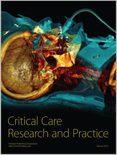
Critical Care Research and Practice
Connecting research and practice to enhance critical care strategies.Critical Care Research and Practice is a distinguished open-access journal published by HINDAWI LTD that has been at the forefront of disseminating vital research in the fields of critical care and intensive care medicine since its inception in 2010. With an impressive Q2 ranking in its category and positioned in the top 63rd percentile according to Scopus rankings, the journal serves as a critical platform for researchers, practitioners, and students aiming to advance their understanding and improve outcomes in intensive care settings. Based in Egypt, the journal's breadth encompasses diverse aspects of critical care, including innovations in treatment protocols, evidence-based practices, and the latest advancements in patient care strategies. Through its commitment to open access, Critical Care Research and Practice ensures that high-quality research is readily available to a global audience, fostering collaboration and knowledge sharing across the medical community.
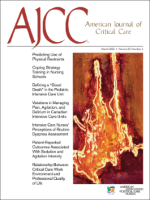
AMERICAN JOURNAL OF CRITICAL CARE
Enhancing understanding in the realm of critical care.Welcome to the American Journal of Critical Care, a premier publication dedicated to advancing the field of critical care nursing and enriching the understanding of critical care practices. Established in 1992 and published by the American Association of Critical Care Nurses, this journal serves as a vital resource for researchers, practitioners, and students alike, providing cutting-edge research, insightful reviews, and evidence-based practices that shape modern critical care. With an impressive impact factor and distinguished rankings—ranking in Q1 for Critical Care Nursing and Q2 for miscellaneous Medicine in 2023—this journal underscores its significance in the healthcare landscape. Although it does not currently offer Open Access, the American Journal of Critical Care remains committed to disseminating high-quality knowledge that drives innovation and improves patient care in critical settings. Join us as we explore the latest advancements and pivotal studies that influence patient outcomes and shape the future of nursing practice.

Critical Care and Resuscitation
Defining excellence in critical care and resuscitation research.Critical Care and Resuscitation is a premier peer-reviewed journal published by Elsevier, focusing on the dynamic fields of Anesthesiology, Critical Care, and Emergency Medicine. Established in Australia, this journal has been a significant contributor to scholarly research since its inception in 1999, maintaining a strong reputation with a commendable impact factor, evidenced by its Q1 quartile rankings across its relevant categories for 2023. The journal's commitment to disseminating high-quality research is reflected in its elite standings: it ranks #7 out of 109 in Emergency Medicine, #12 out of 136 in Anesthesiology, and #16 out of 110 in Critical Care. Aimed at researchers, clinicians, and healthcare professionals, Critical Care and Resuscitation provides a vital platform for the latest advancements in patient care and clinical strategies, making it an essential resource for those eager to stay at the forefront of these critical disciplines. Although lacking Open Access options, its rigorous peer-review process ensures the publication of valuable insights that shape current practices and influence future developments in healthcare.

Journal of Pediatric Emergency and Intensive Care Medicine
Elevating standards in emergency and intensive pediatric care.The Journal of Pediatric Emergency and Intensive Care Medicine, published by GALENOS PUBL HOUSE, is an emerging platform dedicated to advancing the fields of pediatric emergency care and intensive medicine. Established in Turkey, this journal strives to provide a comprehensive forum for the dissemination of innovative research and critical findings relevant to pediatric health, particularly within the emergency and intensive care contexts. Although it is currently categorized in Q4 quartiles across key disciplines such as Critical Care, Emergency Medicine, and Pediatrics, the journal seeks to evolve its impact by embracing high-quality submissions that contribute to best practices and effective patient outcomes in pediatric medicine. As an Open Access journal, it promotes the free sharing of knowledge, allowing accessibility for researchers and practitioners around the globe. Authors and readers can expect a rigorous peer-review process as well as a commitment to highlighting the most pressing issues facing pediatric healthcare today. Join us in advancing the dialogue in this vital sector of medical research.
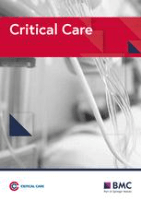
CRITICAL CARE
Unlocking the future of critical healthcare.CRITICAL CARE is an esteemed peer-reviewed journal dedicated to advancing the field of critical care and intensive medicine, published by BMC. Since its inception in 1998, it has been a prominent open-access platform that allows for the dissemination of high-quality research, fostering collaboration among researchers, healthcare professionals, and students globally. With a notable impact factor and ranking in the top quartile (Q1) of critical care and intensive care medicine, CRITICAL CARE occupies a vital role in disseminating cutting-edge findings and innovative practices that can significantly enhance patient outcomes in critical care settings. The journal not only encourages submissions of original research, clinical trials, and reviews but also emphasizes the importance of interdisciplinary approaches to critical care management. Positioned in the United Kingdom, CRITICAL CARE's commitment to open access ensures that its valuable content is readily available to a worldwide audience, reflecting its mission to bridge knowledge gaps and empower professionals in the pursuit of excellence in critical healthcare.

CRITICAL CARE CLINICS
Empowering Research to Enhance Patient OutcomesCRITICAL CARE CLINICS is a premier academic journal published by W B SAUNDERS CO-ELSEVIER INC, focusing on advancing knowledge in the fields of Critical Care and Intensive Care Medicine. With an impressive impact factor and designated as Q1 in both Critical Care and Intensive Medicine categories, this journal is a leading resource for healthcare professionals, researchers, and students alike. Since its establishment in 1985, it has evolved into an essential conduit for cutting-edge research, clinical insights, and evidence-based practices, bridging the gap between theoretical understanding and practical application in critical care. The journal maintains a high ranking, being positioned 15th of 110 in its category according to Scopus, with a noteworthy percentile of 86, indicating its influence and relevance in contemporary medical discourse. Although the journal is not open access, it provides valuable content for those dedicated to enhancing patient care and advancing the science of critical medicine. Its commitment to excellence makes it a vital resource for anyone engaged in the dynamic field of critical care.

Anaesthesiologie
Shaping the Future of Anesthesia: Insights and DiscoveriesAnaesthesiologie is a pivotal journal dedicated to advancing the field of anesthesiology and pain medicine. Published by Springer Heidelberg, this journal serves as a vital platform for disseminating high-quality research and clinical practice advancements within the domain. With an ISSN of 2731-6858 and an E-ISSN of 2731-6866, it operates out of Germany and achieves a respectable impact factor, placing it in the Q3 category for the field as of 2023. The Scopus rank reflects its standing among peers, being positioned at #64 out of 136, showcasing a 53rd percentile in anesthesiology and pain medicine. While open access options are currently unavailable, this journal remains committed to enhancing knowledge and practice standards for researchers, professionals, and students alike, particularly through the period spanning from 2022 to 2024. Contributions to Anaesthesiologie are essential for those seeking to stay at the forefront of innovations and challenges in anesthesia practice.
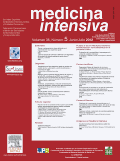
Medicina Intensiva
Pioneering Insights into Critical Patient CareMedicina Intensiva is a distinguished journal published by Elsevier España SLU, specializing in the critical care and intensive medicine fields. Since its inception in 1988, this peer-reviewed journal has established itself as a vital resource for healthcare professionals and researchers dedicated to advancing the knowledge and treatment of critically ill patients. With an impact factor ranked in the Q2 category for Critical Care and Intensive Care Medicine, the journal sits at the 50th percentile among its peers, reflecting its reputable standing in the academic community. The scope of the journal encompasses a wide array of topics, from clinical practices to innovative research findings, contributing significantly to the enhancement of patient care in intensive settings. Although the journal does not currently offer Open Access options, its valuable content is accessible to subscribers and institutions, reinforcing its role as an important conduit for disseminating high-quality research. As we continue into 2024, *Medicina Intensiva* remains committed to supporting the medical community through insightful articles and timely reviews that shape the future of intensive care.